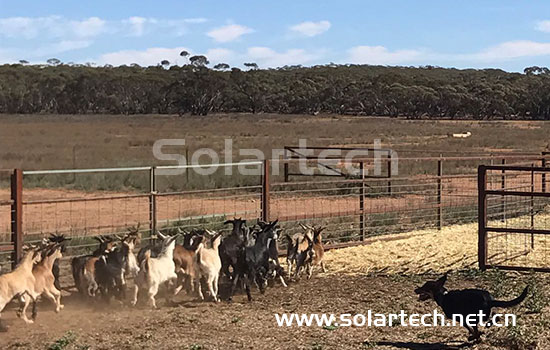Australia has developed agriculture and animal husbandry. Its agricultural and animal husbandry land is 440 million hectares, accounting for 57% of the national land area. It is known as "the country on the back of sheep". The production and export of agricultural and animal husbandry products occupy an important position in the national economy. The main crops are wheat, barley, cotton, sorghum, etc., and the main livestock products are beef, milk, mutton, wool, poultry, etc. It is the world's largest exporter of wool and beef.
However, the average annual rainfall of Australia is only 469mm, and the distribution is extremely uneven. About 70% of the country belongs to arid or semi-arid zone. Every year, with the change of seasons, the precipitation decreases, leading to the drying up of surface water sources such as rivers and reservoirs. Herdsmen have to rush a large number of cattle and sheep to embark on the migration road to find water sources.
Although all towns and inhabited villages in Australia have achieved full coverage of power grid, there is no reliable and stable power supply for many pastures in remote inland areas. Herdsmen have to use windmill pumps or diesel pumps to extract groundwater to provide drinking water for cattle, sheep and other livestock. According to the herdsmen's feedback, windmill water pump not only has high equipment cost, but also is difficult to maintain. Although the equipment cost of diesel engine water pump is low, the fuel cost and maintenance cost are relatively high.

Fortunately, Australia has extremely rich solar energy resources. According to statistics, Australia's sunshine resources rank first in the world, with more than 80% of the ground solar radiation exceeding 5kwh / m2, and even as high as 6kwh / m2 in inland areas. Therefore, in recent years, Australian governments at all levels have actively promoted and advocated the application of solar energy resources in energy projects, especially the use of solar power to supplement the power supply of farms and pastures in inland off grid areas.
(original solargis)
As early as 2014, Shenzhen Solartech has brought the original solar water pumping technology and advanced solar pumping system products to Australian farms to provide stable and reliable drinking water for cattle, sheep and other livestock raised by herdsmen. In 2015, Shenzhen Solartech recommended the newly developed permanent magnet solar pumping system to Australian herdsmen. This water supply system is pure solar powered, without energy storage battery. It is ready to use, fully automatic operation, without manual supervision. It has high system efficiency and less solar panels needed, which is especially suitable for livestock water supply points in the inland areas without grid coverage in Australia.
2014 years project
2016 years project
2017 years project

2018 years project
2019 years project
The practical application case proves that the solar livestock water supply system based on Shenzhen Solartech solar pumping system can provide livestock drinking water facilities with clean energy for pastures in Australia's inland areas without grid coverage. It not only provides stable and reliable drinking water for herdsmen to graze and raise livestock, but also reduces the use of fossil energy such as diesel oil and protects the pasture ecological environment. Solar livestock water supply system has become an innovative and environment-friendly soalr water conservancy industry solution for Australian animal husbandry economy, which plays an important role in the sustainable development of Australian agriculture and animal husbandry.

















